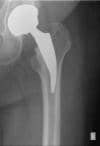A new study found that computer-aided impression making (CAIM) with intraoral scanners results in significantly improved time efficiency. Noting that little was known about the time required to make a digital impression and the impact this could have on time efficiency, the researchers conducted an in vitro investigation to examine the impact of CAIM.
For the study, which appears in the Journal of the American Dental Association (JADA), the researchers used three different intraoral scanners to digitize a single abutment (scenario 1), a short-span fixed dental prosthesis (scenario 2), and a full-arch prosthesis preparation (scenario 3). They measured the procedure durations for the scenarios and compiled and contrasted the procedure durations for three conventional impression materials.
According to the researchers, the mean total procedure durations for making digital impressions of scenarios 1, 2, and 3 were as much as 5 minutes 57 seconds, 6 minutes 57 seconds, and 20 minutes 55 seconds, respectively. The findings showed statistically significant differences between all scanners (P < .05), except Lava (3M ESPE) and iTero with foot pedal (Align Technology Inc) for scenario 1, CEREC (Sirona) and CEREC with foot pedal for scenario 2, and iTero and iTero with foot pedal for scenarios 2 and 3. The compiled procedure durations for making conventional impressions in scenarios 1 and 2 ranged between 18 minutes 15 seconds and 27 minutes 25 seconds; for scenario 3, they ranged between 21 minutes 25 seconds and 30 minutes 25 seconds.
The researchers found that CAIM was significantly faster for all tested scenarios, suggesting that CAIM might be beneficial in establishing a more time-efficient workflow. They added, that on the basis of the results of this in vitro study, CAIM was found to be superior with regard to time efficiency in comparison to conventional approaches and might accelerate the work flow when it comes to taking impressions.








